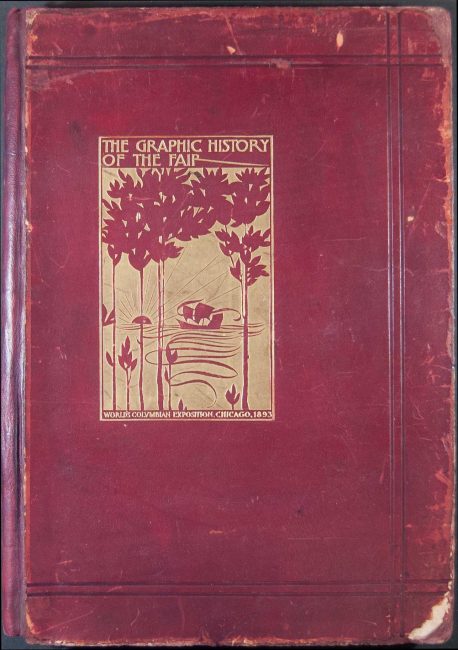Held in Chicago in 1893, the Columbian Exposition marked the 400th anniversary of Christopher Columbus’ voyage to America. The fair’s organizers built an entire temporary city – known as the “White City,” for the color of the buildings’ plaster facades – to house the fair. The Exposition contained some 65,000 exhibits showcasing all manner of arts and technology, and featured such recent innovations as electricity and the Ferris Wheel. Bradley himself had a small exhibit at the Columbian Exposition, possibly in early April 1893, though neither he nor his exhibit are mentioned in any of the fair’s official publications. (In his memoirs, Bradley noted that one of the benefits of exhibiting was that it entitled him to a pass for unlimited entry to the fair). He most likely would have exhibited in the Liberal Arts section in the Manufactures Building, which housed exhibits from a variety of American universities, art schools, and publishers. Bradley was a frequent visitor to the fair, so much so that his work production declined significantly during that period. Much of his time at the fair was spent studying exhibits on all aspects of printing and graphic design.
Bradley designed the binding for The Graphic History of the Fair, which was published as one of the many volumes documenting the Exposition. Bradley also supplied one printed initial letter and one illustration for inclusion in the book.
Monroe, Harriet, 1860-1936.
The Colvmbian Ode. Chicago: W. Irving Way & Co, 1893.
This disbound printer’s copy of The Colvmbian Ode shows Bradley’s title page illustration, which can be compared to Bradley’s earlier draft, shown framed in the gallery.
This disbound printer’s copy of The Colvmbian Ode shows Bradley’s title page illustration, which can be compared to Bradley’s earlier draft, shown framed in the gallery.
This drawing is either a preliminary sketch or a rejected draft of the title page illustration for the 1893 pamphlet, The Colvmbian Ode. In the published version (which can also be seen in the gallery), the angel is shown standing upright, playing a lute with both hands while standing atop a laurel wreath. The typography in this drawing is also almost exactly the same as what was used in the final version.


![[Original pencil and ink drawing and titling for] The Colvmbian Ode [Original pencil and ink drawing and titling for] The Colvmbian Ode](https://exhibitions.lib.udel.edu/will-bradley/wp-content/uploads/sites/38/2019/10/Original-pencil-and-ink-drawing-and-titling-for-The-Colvmbian-Ode-e1578681035652.jpg)
